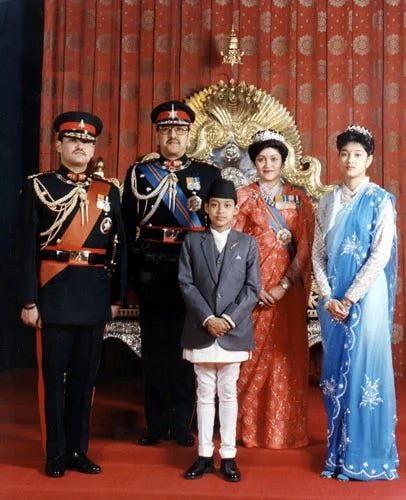the crown’s last night
the fall of nepal’s royal family
The air in Nepal carried a heaviness in the years leading to 2001, thick with history, traditions, and unresolved tensions. Towering Himalayan peaks cast their shadows over a nation caught between the ancient and the modern. Nestled between China and India, Nepal was a land of striking beauty, yet beneath its serene exterior lay deep political and social unrest. For centuries, the monarchy had been a cornerstone of Nepalese identity, but as the world moved forward, the kingdom grappled with its place in an ever-modernizing world.
In 1990, Nepal experienced a seismic political shift. After years of autocratic rule under the Panchayat system, a pro-democracy movement swept the country. King Birendra, a ruler often described as progressive and thoughtful, agreed to limit his powers and introduced a constitutional monarchy with a multi-party parliamentary system. His decision was hailed internationally as a bold step toward modernization. However, it also marked the beginning of a new era of instability. While the reforms allowed for greater political participation, they did little to alleviate the systemic inequalities that plagued the nation.
Keep reading with a 7-day free trial
Subscribe to pieces & periods to keep reading this post and get 7 days of free access to the full post archives.



